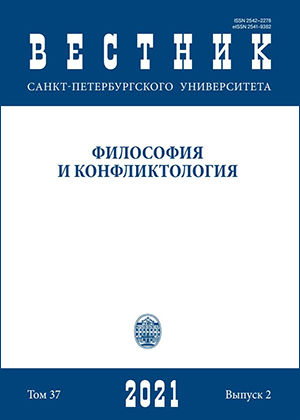Теория эволюции и философия науки
DOI:
https://doi.org/10.21638/spbu17.2021.204Аннотация
Философские теории научного прогресса, разработанные на основе истории физико-математических наук, трудноприменимы для анализа биологических наук и, в частности, эволюционной теории. В статье схематично обрисовывается история эволюционной теории от ее истоков до актуальных концепций. Нашей целью является описание динамики дарвинизма и антидарвинизма в перспективе философско-научных проблем. Мы подробно разбираем аргументы Э. Майра о неприменимости теории научных революций к истории биологии. Выдающийся эволюционист ХХ в. Майр
оставил обширное наследие по вопросам истории и философии науки. Он подчеркивал, что подлинная научная революция в биологии произошла благодаря Дарвину, опубликовавшему в 1859 г. «Происхождение видов путем естественного отбора». Но дарвиновская революция не вписывается в куновскую схему. Дарвин предложил целую теоретическую систему, в которой можно выделить пять наиважнейших теорий: собственно эволюционную теорию (факт эволюции), теорию общего происхождения организмов (включая и человека), теорию градуализма (эволюция идет путем возникновения малых различий), теорию умножения числа видов и теорию естественного отбора. Выявление этих составляющих имеет огромное значение для историков науки, поскольку их судьбы существенно различались. Принятие большинством научного сообщества одной теории не означало автоматического принятия другой. Еще один аргумент Майра заключался в том, что Дарвин произвел не одну, а две научные революции, которые Майр обозначил как первую и вторую дарвиновские революции, причем вторая случилась уже в ХХ в. при активном участии самого Майра, хотя в ее основе лежала все та же дарвиновская идея естественного отбора. Происходившее между двумя этими революциями нельзя назвать «нормальной наукой» в терминологии Куна. Наша историческая реконструкция эволюционной теории подтверждает антикуновскую аргументацию Майра. Мы отстаиваем тезис о том, что для описания «эволюции теории эволюции», начиная с Дарвина, применима модифицированная теория исследовательских программ И. Лакатоса, но не в «чистом» виде, а с элементами марксистско-гегелевской диалектики.
Ключевые слова:
биологическая эволюция, эволюционная теория, дарвинизм, ламаркизм, исследовательские программы, диалектика
Скачивания
Библиографические ссылки
Загрузки
Опубликован
Как цитировать
Выпуск
Раздел
Лицензия
Статьи журнала «Вестник Санкт-Петербургского университета. Философия и конфликтология» находятся в открытом доступе и распространяются в соответствии с условиями Лицензионного Договора с Санкт-Петербургским государственным университетом, который бесплатно предоставляет авторам неограниченное распространение и самостоятельное архивирование.






